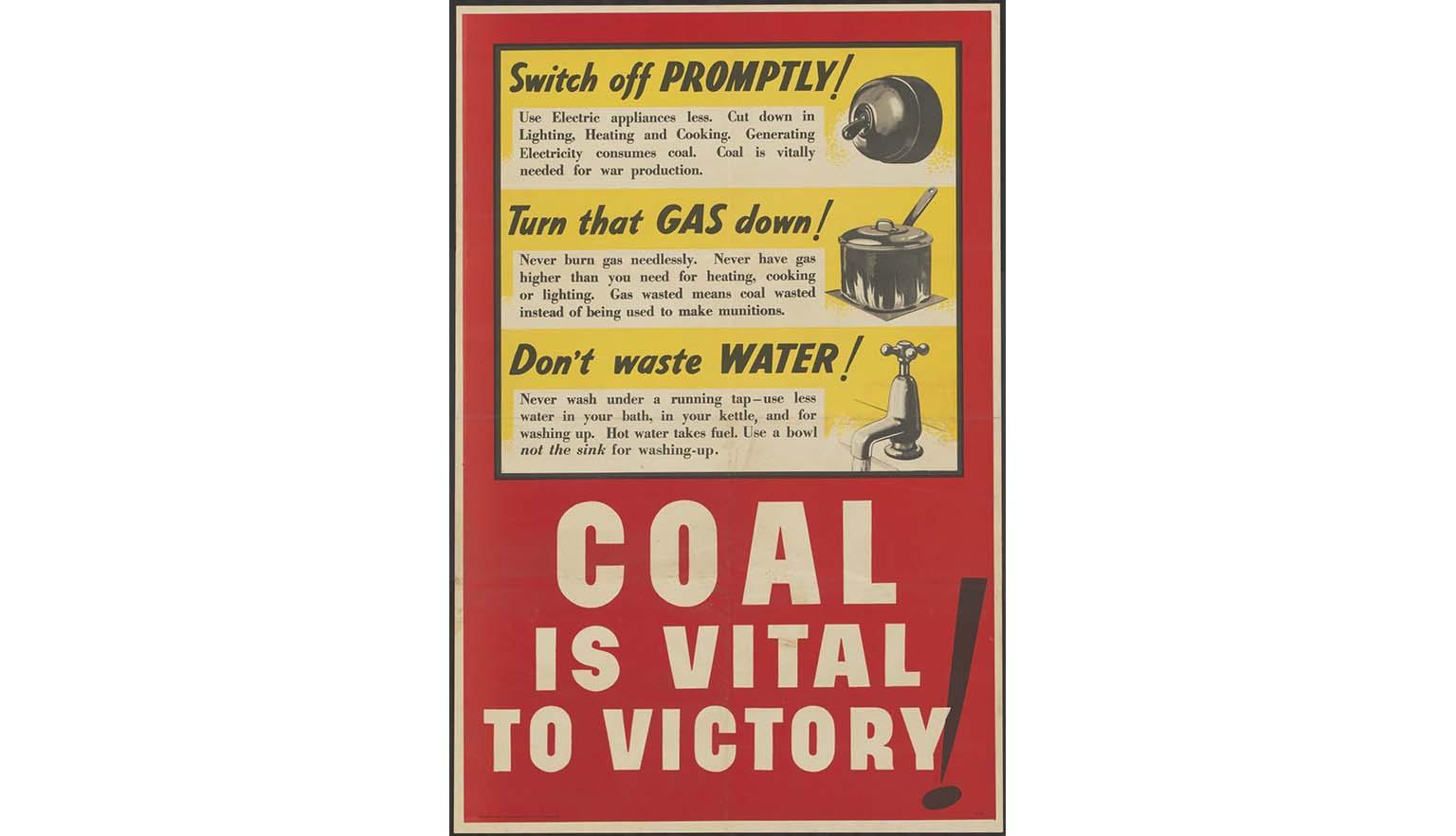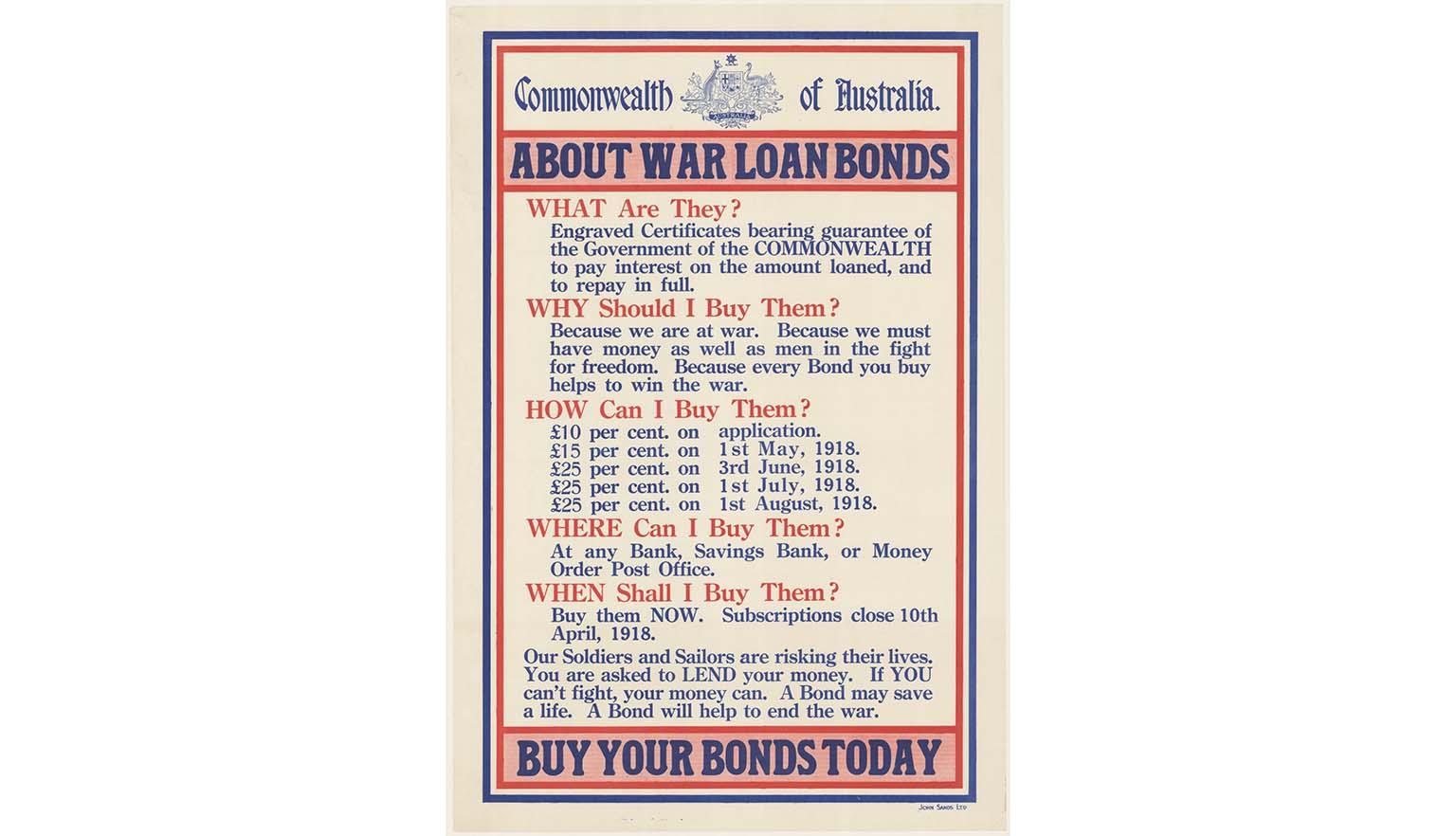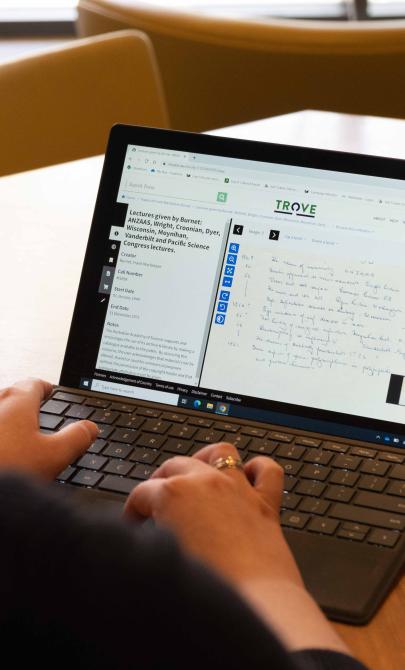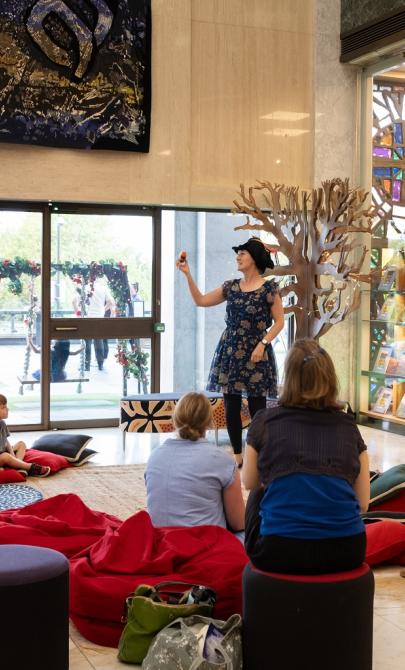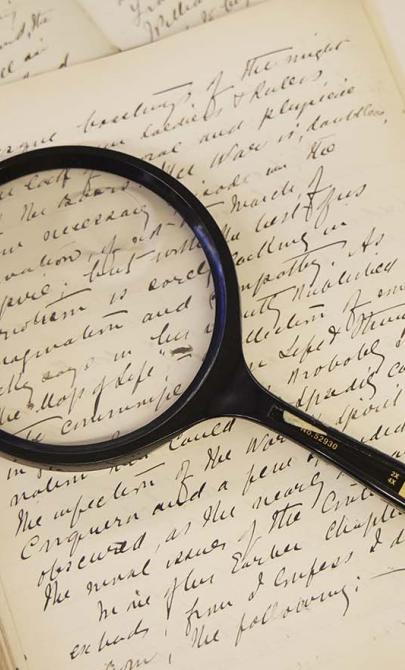Public service announcements: For the war effort
Poster designs
These posters were created during times of war to persuade the Australian public to support the national war effort.
The 2 examples below were produced during the First and Second World Wars:
About War Loan Bonds (1918) – First World War (1914–1918)
Coal is Vital to Victory! – Second World War (1939–1945)
Both posters are public service announcements designed to influence everyday behaviour. They used persuasive techniques to encourage Australians to contribute financially or to conserve essential resources.
Poster summaries
About War Loan Bonds (1918)
A red, white and blue poster showing the Australian coat of arms and the words Commonwealth of Australia. Bold headings urge citizens to BUY YOUR BONDS TODAY.
Coal is Vital to Victory!
A bold red and yellow poster with 3 key instructions:
- Switch off PROMPTLY (with an image of a light switch)
- Turn that GAS down! (with an image of a pot on a stove)
- Don’t waste WATER! (with an image of a running tap)
Investigate and interpret
Choose one or both posters and analyse them by asking:
- Who created this?
- Why was it made?
- When was it made? What else was happening at the time?
- Where does the information come from?
- What’s missing from the message?
- How might different audiences interpret it?
- What reaction is the creator trying to provoke?
- Who benefits if the message succeeds?
- What happens if the audience doesn’t act?
- What language and imagery are used to persuade?
- How do these posters make you feel — and why?
Historical context
About War Loan Bonds
During the First World War — and again in the Second — the Australian government issued War Loans to help fund military expenses such as pay, ammunition and supplies.
The public was encouraged to lend money to the government. These loans were later repaid with interest. Posters like this one were widely distributed by the government and banks to promote the scheme.
Coal is Vital to Victory!
During the Second World War, Australians were asked to conserve energy and resources at home — including coal, gas and water — so more could be used in factories and supply chains that supported the war effort.
The government also introduced rationing for essential goods such as fuel, food and fabric. Public messaging campaigns were used to build support for these measures and encourage personal responsibility.
